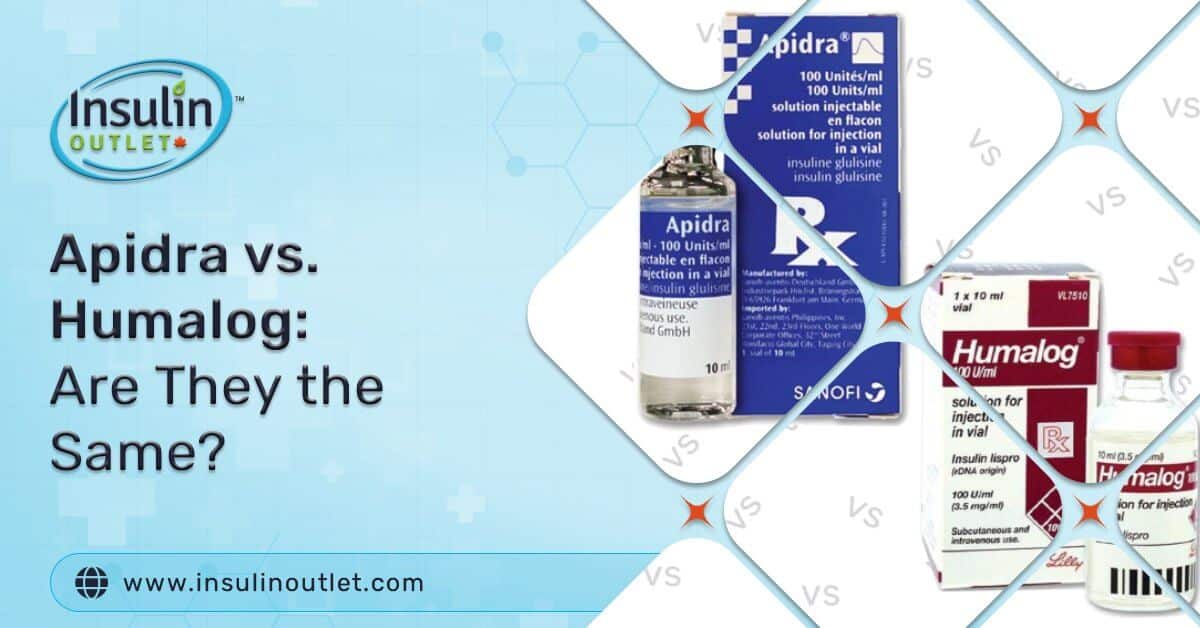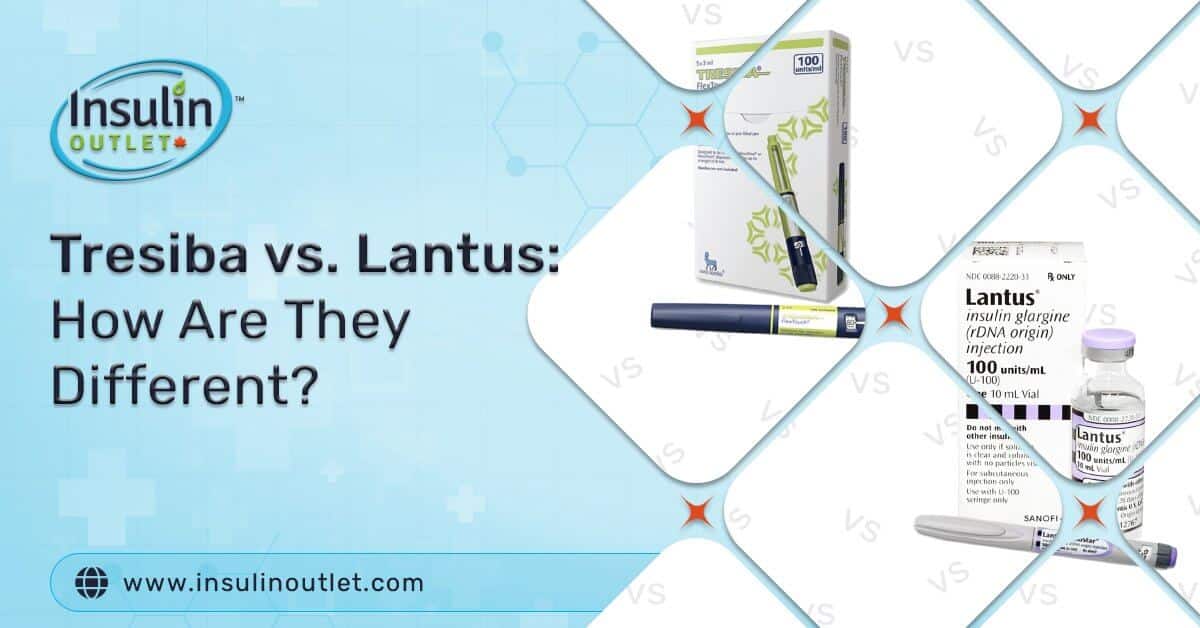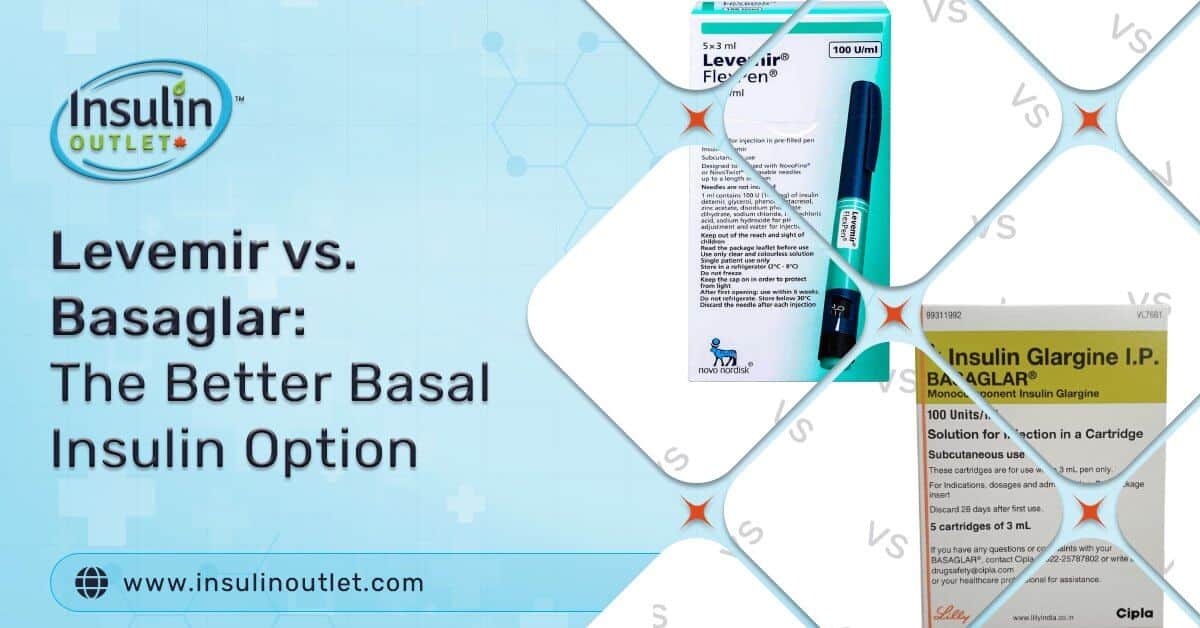
Finding an effective and safe insulin medication is of crucial importance for diabetes patients. Fortunately, there are a few good options on the market, including Levemir and Basaglar. But which medication offers better results? And are Levemir and Basaglar interchangeable?
This comprehensive guide compares Levemir and Basaglar based on their effectiveness, side effects, and costs to give you more insights into which medication may be better for you.
Table Of Contents
ToggleAbout Levemir
FDA-approved in 2005, Levemir (insulin detemir) is a long-acting basal insulin analog. This injectable medication mimics insulin’s function, facilitating the cellular uptake of glucose in muscle and adipose tissues.
Levemir also promotes hepatic glucose output, effectively lowering blood sugar levels throughout the day and helping patients with Type 1 and Type 2 diabetes manage their condition.
The medication’s onset usually occurs within 2 hours from administration, while its peak times fall between 6 to 8 hours in most patients.
In 2023, Novo Nordisk, a Levemir producer, decided to discontinue the medication. After December 2024, Levemir will be unavailable to purchase. Therefore, talk to your doctor about other options to include in your diabetes management plan.1
About Basaglar
Basaglar is a brand name for a long-acting insulin medication called insulin glargine. It’s primarily used to manage blood sugar levels in people with diabetes, particularly in adults and children about the age of 6 with Type 1 diabetes, and adults with Type 2 diabetes.
Similar to Levemir, this insulin is designed for a slow and steady release of insulin into your bloodstream over a prolonged period, typically up to 24 hours.
Basaglar’s onset and peak times might be slightly slower than Levemir’s, with effects starting within 1-2 hours and peaking around 8-12 hours. Just like Levemir, the drug is administered in the form of injections.2
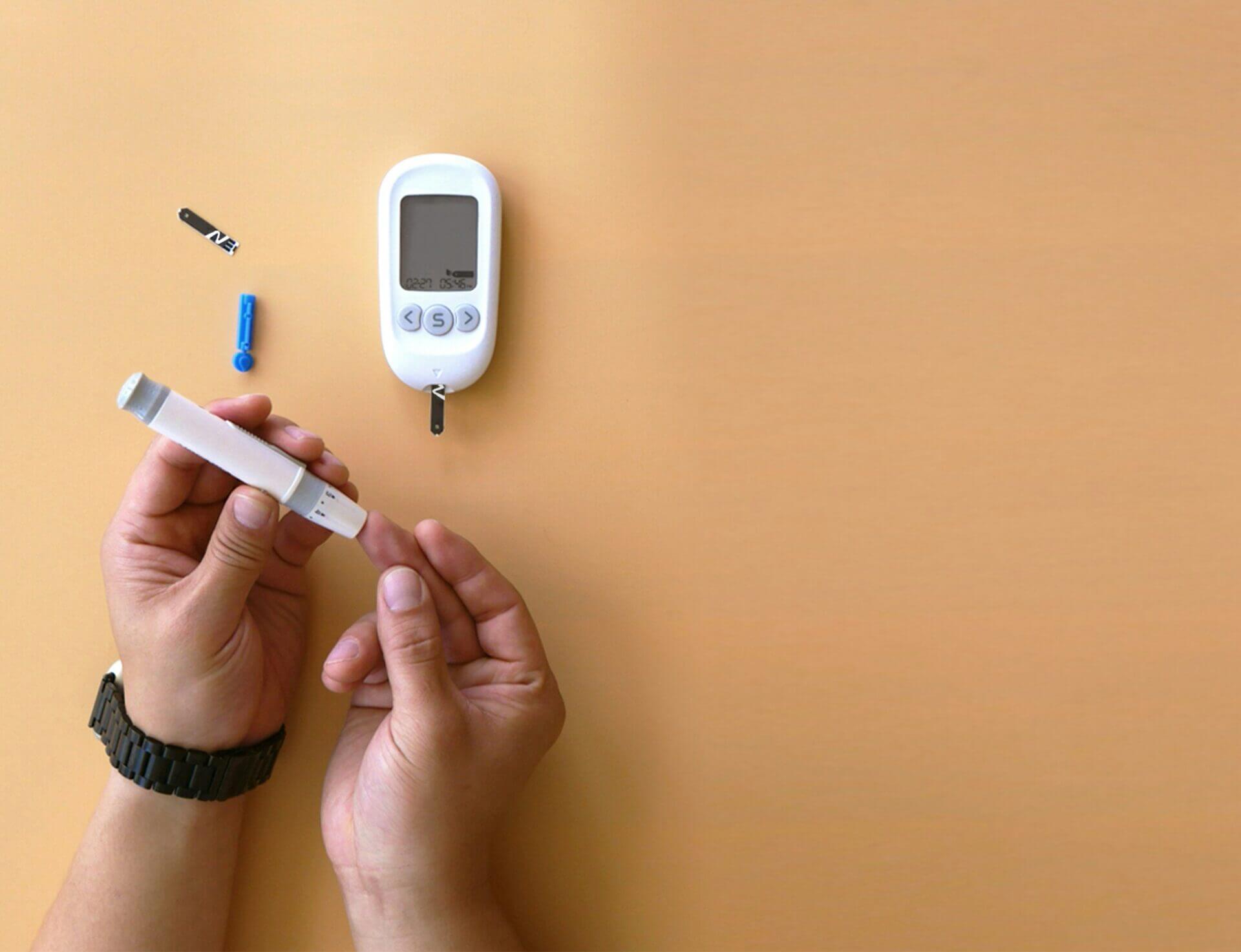
Levemir vs Basaglar - Comparison
Both Levemir and Basaglar are long-acting insulin medications formulated to lower glucose blood levels in patients with diabetes. However, while the effect both of these drugs offer is the same, their active ingredients, peak times, and dosage differ.
So, to answer, is Levemir the same as Basaglar, no, it is not the same medication, even though their effects and effectiveness are similar.
Let’s compare Levemir vs Basaglar in terms of approved uses, effectiveness, side effects, drug administration, and costs to find out which of the two might be considered better basal insulin for you.
Uses
Levemir: Approved by the FDA to improve glycemic control in adults and children with diabetes. It is not recommended to treat diabetic ketoacidosis, as it requires a much faster and more significant reduction in blood sugar levels than Levemir can offer. The producer recommends the use of rapid-acting or short-acting insulin instead.1
Basaglar: Similar to Levemir, FDA approved Basaglar for treating high glucose levels in patients with diabetes. As a long-acting insulin, it’s also not recommended for patients with diabetic ketoacidosis.2
Weight Loss
Neither Levemir nor Basaglar is FDA-approved for weight loss. However, some studies suggest that Levemir may have some weight loss benefits. Still, both medications list weight gain as one of the potential side effects.
In fact, in clinical trials, people with type 1 diabetes who were administering Basaglar gained up to 0.36 kg (around 1 pound) in the first 6 months of the treatment. A different clinical study showcased that patients with Type 2 diabetes noted 1.8 kg (4 lbs) weight gain in the same window of time.
In the study comparing Levemir and Basaglar in regards to potential weight gain, the former showed lower weight gain than the latter.
It’s imperative to talk to a medical professional about potential weight management strategies that can be implemented during the therapy with both types of insulin.
Effectiveness
Both medications are proved to be effective in glucose level control.
Levemir
Studies show Levemir to be at least as effective as other long-acting insulins like NPH or Lantus in lowering HbA1c (glycated hemoglobin). In adults with Type 1 diabetes, reductions ranged from 0.1% to 0.8%, while Type 2 diabetics saw reductions between 0.6% and 2%. Levemir also effectively reduces fasting blood sugar levels.
This insulin is also effective in controlling blood sugar levels in children above the age of 2. In clinical trials done on children aged 6 to 17, the effect Levemir had on HbA1c varied. On average, HbA1c levels either slightly increased by 0.3% or decreased by 0.7%.
Fasting blood sugar levels showed a positive change, with an average reduction of 10 mg/dL to 39 mg/dL.
Those results were comparable with those of insulin NPH.
Basaglar
In clinical studies, Basaglar was proven to be an effective drug for controlling blood sugar levels in Type 1 and Type 2 diabetes patients. Clinical trials have shown that Basaglar is comparable to other long-acting insulins, such as Lantus, in terms of reducing HbA1c, which is a measure of average blood sugar control over a 2-3 month period.
In a 6-month clinical study, adults with type 1 diabetes who took Basaglar in combination with mealtime insulin experienced an average HbA1c reduction of 0.35%.
Side Effects
Levemir
Levemir’s producer lists potential side effects of the medication, such as:
- Low blood sugar
- Injection site reactions
- Weight gain
- Swelling in your arms and legs (edema)
- Headache
- Upset stomach
- Rash or itching
- Flu-like symptoms
- Allergic reactions
Basaglar
Among Basaglar’s potential side effects, we will find:
- Low blood sugar
- Injection site reactions
- Diarrhea
- Weight gain
- Swelling of the arms and legs (edema)
- Skin rash or itching
- Blurred vision
- Flu-like symptoms
Drug Forms and Administration
Levemir and Basaglar are injectable insulin, usually administered once or twice a day. Levemir can be acquired in the form of a prefilled pen (FlexTouch) or 10mL vial.
Basaglar is available to purchase in the form of single-use KwikPens or Tempo Pens, both containing 3mL of the drug.
Drug dosing and administration schedules for these medications will depend on individual circumstances. You should always consult your physician about proper dosing and any changes you’d like to make to your medication schedule.
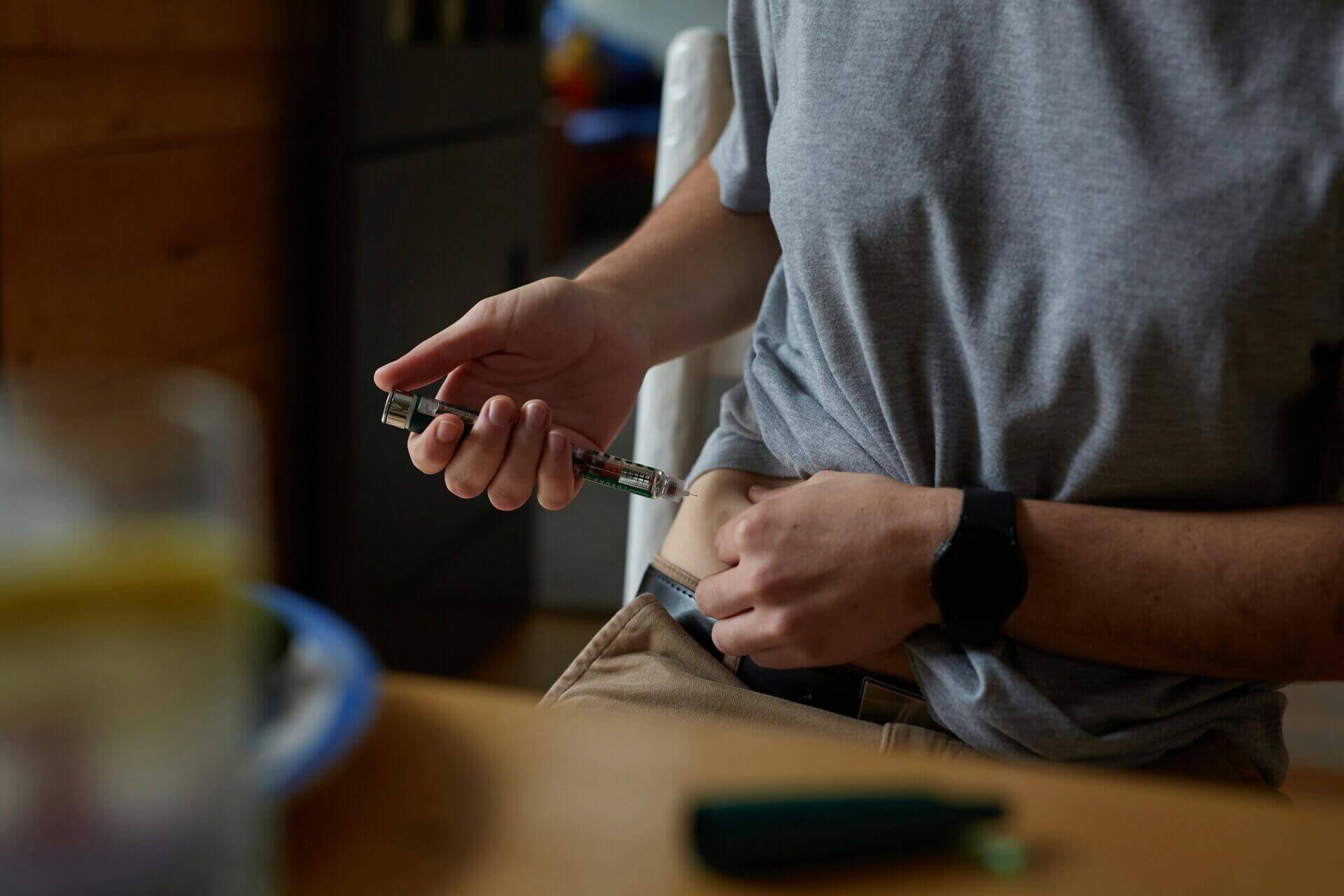
Costs
Levemir
The average cost of Levemir is around $11.99 per unit. a 10ml vial containing 100 units/ml can cost between $123 to $364, depending on the pharmacy.3
Basaglar
Per unit, patients will have to pay around $23.54 for Basaglar. This rounds up the costs of a 15 mL supply (100 units/ml) to around $353.4
Important Consideration Check Insulin Outlet’s offer for Levemir and Basaglar. By ordering your insulin from Canada, you may lower the costs of your medication, especially when you’re buying the drug out of pocket. Read more about the advantages of buying insulin from Canada from reliable pharmacies like Insulin Outlet. |
Levemir vs Basaglar – Comparison
Levemir | Basaglar | |
Active Ingredient | Insulin detemir | Insulin glargine |
FDA Approved Uses | Type 1 & 2 Diabetes (not for diabetic ketoacidosis) | Type 1 & 2 Diabetes (not for diabetic ketoacidosis) |
Effectiveness (HbA1c Reduction) | Adults (0.1% – 0.8% Type 1, 0.6% – 2% Type 2), Children (variable) | Adults (0.35% Type 1), Comparable to Lantus |
Weight Gain | May cause some, lower than Basaglar in studies | May cause some |
Common Side Effects | Low blood sugar, injection site reactions, weight gain, edema, headache, upset stomach, rash/itching, flu-like symptoms, allergic reactions | Low blood sugar, injection site reactions, diarrhea, weight gain, edema, rash/itching, blurred vision, flu-like symptoms |
Dosage Form | Prefilled pen (FlexTouch) or vial | Single-use pens (KwikPen, Tempo Pen) |
Cost per Unit | ~$11.99 | ~$23.54 |
Availability | Discontinued after December 2024 | Available |
Levemir to Basaglar Conversion
If you want to switch from Levemir to Basaglar, you should consult with a physician beforehand. They will be able to create a safe transition plan and offer you the correct dosage conversion.
In some cases, the conversion ratio of 1:1 between Levemir and Basaglar may be possible;5 however, it’s imperative to approach medication dosing individually, under professional guidance.
Basaglar vs Levemir – Final Words
Levemir and Basaglar, while both long-acting insulins used for managing diabetes, have some differences. Both medications effectively control blood sugar and share common side effects. However, Basaglar tends to be more expensive per unit, and while both can cause weight gain, Levemir may have a slight advantage in this area.
Ultimately, the best choice depends on individual factors, and consulting your doctor is crucial, especially when transitioning from Levemir to Basaglar.
Sources:
- LEVEMIR ®, Label, https://www.accessdata.fda.gov/drugsatfda_docs/label/2012/021536s037lbl.pdf
- BASAGLAR ®, Label, https://www.accessdata.fda.gov/drugsatfda_docs/label/2015/205692lbl.pdf
- “Levemir Prices, Coupons & Patient Assistance Programs.” Drugs.com, www.drugs.com/price-guide/levemir.
- “Basaglar Prices, Coupons, Copay & Patient Assistance.” Drugs.com, www.drugs.com/price-guide/basaglar.
- “Levemir No More, Race in Research, Improv, Post Traumatic Growth.” www.carilionclinic.org/news/532—levemir-no-more-race-in-research-improv-post-traumatic-growth/#:~:text=Conversions%20include%3A.
Share:

